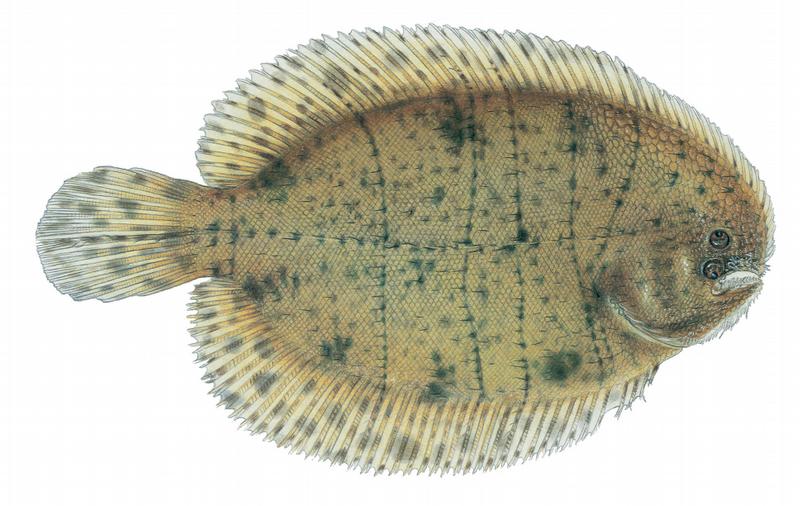
Trinectes maculatus
FAMILY
Achiridae
TAXONOMY
Pleuronectes maculatus Bloch and Schneider, 1801, Tranquebar,
India (in error).
OTHER COMMON NAMES
French: Sole bavoche; German: Amerikanische Seezunge.
PHYSICAL CHARACTERISTICS
Small, oval, dextral flatfish that have a deep and thick body
without a definite caudal peduncle. The dorsal and anal fins
are free from the caudal fin, and the right pelvic fin is joined
to the anal fin. A relatively small head, with the snout slightly
overhanging the small, subterminal mouth. The eyes are small,
flat, and separated by a small space. The dorsal fin originates at
the tip of the snout. No pectoral fins. The lateral line is
straight. The skin is very slimy with mucus. Scales are ctenoid
and very rough on both sides of the body. The ocular side is
slate-olive to dark brown, with numerous conspicuous, darker
transverse crossbands. There is also a longitudinal stripe along
the midregion and, occasionally, a number of darker, diffuse
blotches scattered over the surface. The blind side is dirty
white; some specimens have numerous irregularly rounded
spots, varying in both size and number, scattered over the
blind side. This species reaches lengths of about 7.9 in (20 cm),
with most averaging about 2.4–5.9 in (6–15 cm). They live for
about seven years. Females grow larger and live longer than
males.
DISTRIBUTION
Western North Atlantic in marine, estuarine, and freshwaters
along the Atlantic coast of North America from Maine to the
Gulf of Mexico.
HABITAT
They occur most commonly on mud, sand, or silt bottoms in
coastal bays and estuaries with brackish water. In larger estuaries,
young (small) fish tend to be found in upper reaches of estuaries,
sometimes at considerable distances upstream into
freshwater portions of coastal rivers. Fish size generally increases
with increasing distances down estuary. The largest
hogchokers usually are found in the lower estuary and also on
the inner continental shelf to about 82 ft (25 m) and rarely to
about 246 ft (75 m). Able to withstand a considerable range of
temperatures of about 34–95.2°F (1.1–35.1°C). Euryhaline
(able to withstand a range of salinities), ranging in salinity from
freshwater to about 50 ppt. Can tolerate low oxygen conditions
for periods up to 10 days. Will move out of areas with extremely
low oxygen levels.
BEHAVIOR
Under laboratory conditions, hogchokers were active only during
the dark period, with peak activities associated with times
of slack tide in the natural
HABITAT
. Under continuous dim
light, activity peaks coincided with slack tide, and fish were active
in the diurnal as well as the nocturnal phase of the cycle.
FEEDING ECOLOGY AND DIET
Opportunistic, nocturnal feeders that eat a variety of small invertebrate
prey, including amphipods, clam siphons, annelid
worms, copepods, and small fishes. These fishes tend to macerate
their food. Hogchokers are consumed by a variety of
predators, including bull sharks, sandbar sharks, smooth dogfish,
stingrays, striped bass, weakfish, bluefish, and cobia.
REPRODUCTIVE BIOLOGY
Mature at two to four years old and at sizes as small as about 2
in (5 cm). Probably a serial spawner. Annual fecundity has not
been estimated for this species. Batch fecundity varies with fish
size. Small females, about 3.5 in (9 cm), produce about 11,000
eggs, and larger females, 4.3–6.3 in SL (11–16 cm SL), produce
from 23,000 to 54,000 eggs. The spawning season is April
to October, but eggs have been reported as early as January,
and in the southern Gulf of Mexico spawning may occur yearround.
Spawning takes place in estuaries between 6 P.M. and
10 P.M., when water temperatures reach 68–77°F (20–25°C).
Hogchoker eggs are pelagic in high-salinity waters and demersal
in lower-salinity waters. Hatching occurs about one to two
days after spawning. Eye migration begins at about 0.2 in (5
mm), 34 days after hatching, and is completed when fish are
about 0.7 in (18 mm).
CONSERVATION STATUS
Not threatened.
SIGNIFICANCE TO HUMANS
Edible but noncommercial species of no interest to fisheries,
owing to their small size. They sometimes are captured and
sold to hobbyists in the aquarium fish trade.
Other popular Animals
Photo Gallery of - Hogchoker

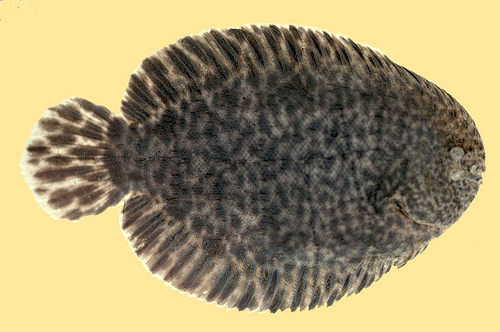
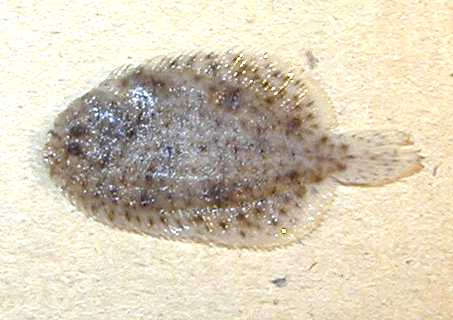
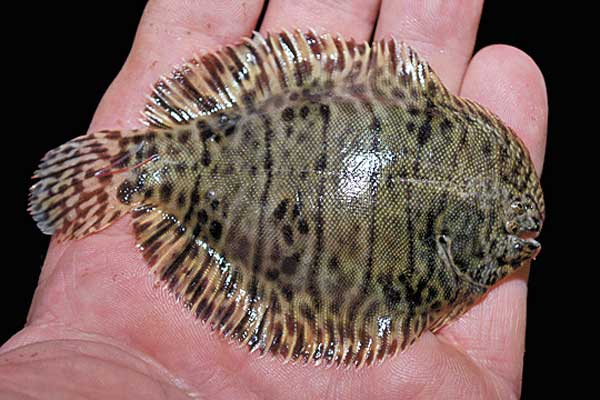
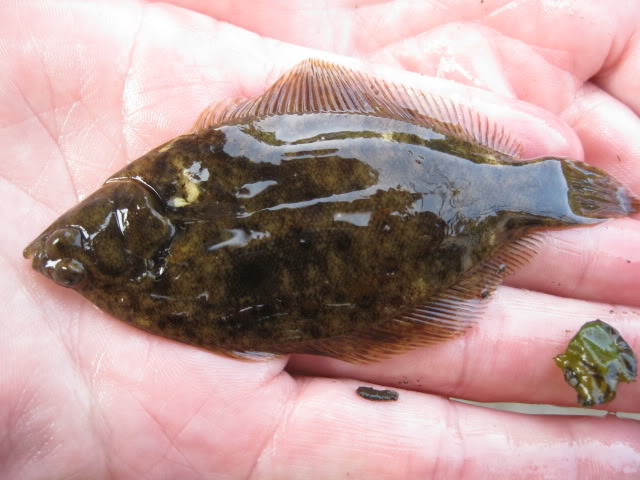
 Animalia Life
Animalia Life